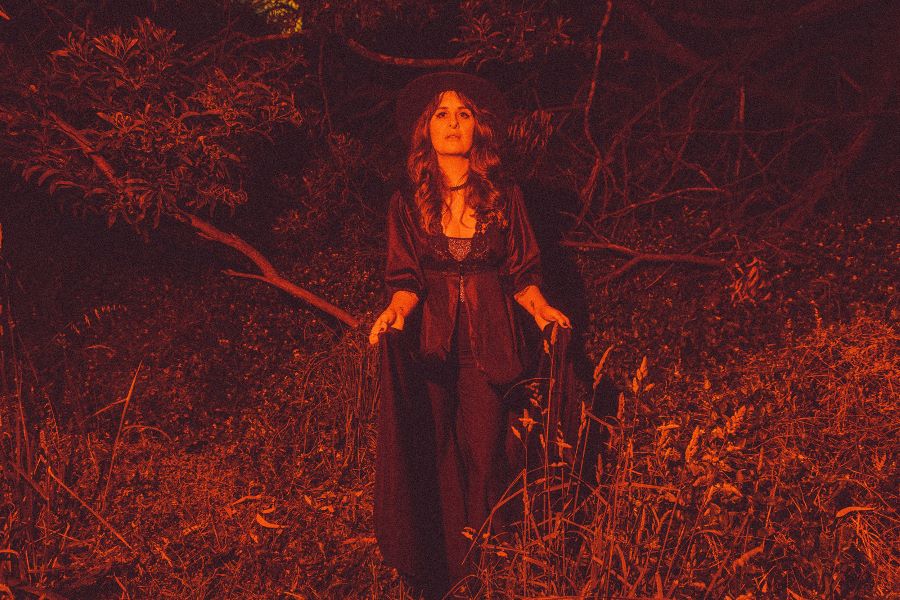
Nighteyes is the solo project of New Zealand-born and Melbourne-based multi-instrumentalist Rachel Trainor. She has just released her stunning and haunting debut album, The Way Back Down.
The Way Back Down is a collection of tracks steeped with drama and stories. They are a mix of dark rock, folk and electronica, which navigate a broad range of themes. From this world and beyond to themes of trauma, love, sorrow, environmental consciousness, connection, and transformation.
Trainor has a diverse background, having worked in musical, circus, and cabaret acts. Being a multi-instrumentalist, she played most of the parts on each of the songs. You can feel the art of the craft throughout The Way Back Down. Listening to the album is an immersive journey filled with emotion.
Some of the tracks have a feel of Irish folk tales. The guitars can be dark and moody, and at times shift to having a lightness about them. Their instrumentation is rich and varied, tightly bound to the lyrics.
Nighteyes has written a track-by-track breakdown for the AU to celebrate the release of The Way Back Down. So, draw the curtains, turn up the volume, press <play> and read on.
Nighteyes – The Way Back Down – Track by Track
The Way Back Down is a journey through our collective unconscious, through realms unknown, the darkness and the light. It’s a somewhat personal story, through trauma, love, sadness, environmental issues, connection and change. I ordered the tracks to take the listener on this specific journey, so it starts out somewhat dark with “Down By The Sea”, then moves into the light in “Lowlight” and “Hollow Tree”, back down to the depths for “My Only One”, “In The Wake”, “Plenty” and “Third Eye”, then we head back into the light for the closing track, “Spiral”.
The opening track, “Down By The Sea” tells the story of love lost, about a couple who remain together, despite their love fading. The protagonist remembers their time in a house by the ocean and is nostalgic for that time. As the song continues, this place becomes romanticised and they yearn more and more for that natural beauty, away from the concrete city they live in. As the song closes, it takes a darker turn as it is revealed they make the ultimate sacrifice to forever be together, ‘Down By The Sea’.
“Lowlight” is a clear moonlit night on a deserted beach with a wild bonfire burning. I had a vision in my mind when I wrote this song of the particular kind of light the moon emits, how it doesn’t quite illuminate the dark and makes scary shadows out of things that would be benign during the day. The lyrics in the verses weave fear and paranoia into what would normally be a beautiful moonlit night, exploring the state you can get into when you’re so anxious even the trees seem menacing. Then the choruses invite the protagonist towards the bonfire, something man-made and familiar, along with friendly faces around the fire to connect with, as well as the divine in the stars above. The song themes are all about community, and how connection with others and the divine have such a heavy impact on our lives and mental health.
“Hollow Tree” is a dreamy love song tinged with darkness. The lyrics paint a picture of a couple gently drifting away from the confines of reality amidst the enchanting embrace of a misty lagoon, poised to embark on a journey into the realm of their deepest fantasies. The music seamlessly mirrors this dreamlike motif, gracefully transitioning into a tranquil darkness as they finally arrive at their destination – a hollow tree nestled in an alternate dimension.
“My Only One” is an autobiographical song about my own struggles with mental health, particularly anxiety. In the first line, anxiety is manifested as a black cat that causes the heaviness in her chest, and makes the protagonist believe this is the only emotion they will ever feel. The chorus goes on to describe being left in the cold, and how sometimes she can see through it once she’s past the worst of the emotion. The lyrics weave between the author believing the anxious thoughts, and then second-guessing them. The bridge is a culmination of a panic attack, with the lyrics circling in a canon around a main vocal line getting higher and higher. In the last verse, the protagonist is at the end of their tether and finally concedes that yes, this feeling will be the only one.
“When I began to write “In The Wake” back in 2014, the image in my mind was of a burning shore with choking smoke blocking out the sun, collapsing cliffs and fire all around (oddly reminiscent of the January 2020 fires). I wanted to create a mourning song that evokes the sense of helplessness that a lot of us feel when faced with the environmental catastrophes we’re facing today. The protagonist is on the water, looking back to a dead land that’s beyond repair. In the first verse, they’re beginning to realise the extent of the damage done, to the second verse inviting the listener to ‘let go’, to move away from the idea of saving the land they’re leaving behind. With the repeating lines in the chorus, the lyrics evoke a sense of disbelief, and how powerless we feel as individuals when faced with these huge worldwide issues.
“Plenty” is a song about our earth and the issues we are facing with human-driven climate change and general societal progress. The song starts as a prayer to the land, reminiscent of how we used to connect to the Earth, nature, and its gifts. It then tells the story of our accelerated progress and how, although the world seems so immense and we’re so small, we hold its fate in the palm of our hands. The song ends with a lament to our Mother Earth, how we’ve passed the point of no return and we’ve abandoned her. Musically the instrumentation follows this story, starting out quiet and dreamy, then getting heavier and darker throughout until the heavy outro section closes out the song with keening guitars and loud drums.
“Third Eye” is a dark, melodic exploration of family dynamics and how traits are echoed throughout generations. As the protagonist goes through a spiritual awakening, they come to the realisation that they are perpetuating the same issues, and now they see previous generations for what they really are. The repeating line of the main guitar evokes this somewhat endless cycle, with the underlying synths evoking a sense of unease. A story familiar to many, the question remains unanswered whether the pattern will remain unbroken.
The closing song of the album, “Spiral”, is the culminating journey through the darkness into the light. Written during the 2020 lockdown in Melbourne, the song expands on the way the mind can spiral in on itself forever when stuck in a thought loop. Nothing feels real in that shadowy realm, and sometimes it can feel like the whole world is ending. The music follows this, with the verse meters in 7, the chords in a phrase of three bars while the drums are in a phrase of four bars. So there’s an endless, cyclical, spiral feeling to it. One dark lockdown night, it felt like nothing would ever be ok again, but then a few hours later I witnessed the most beautiful sunrise. This is the ending of the song, the meter goes back to four, and the uplifting harmonies in the vocals evoke a feeling of freedom, comfort and safety. The last line, ‘and I see, could it be’ has a changed meaning from the verses when sung over the new chord progression, from darkness to hope. The album ends with a gorgeous synth section, promising that even the darkest nights of the soul eventually come to an end. The incredible thing about this story is that I wrote this song BEFORE that night.
![]()
The Way Back Down from Nighteyes is out now on all streaming platforms.
You can give Nighteyes a follow on Facebook, Instagram, Youtube, Spotify and Apple Music
Header image credit: Rick Clifford
